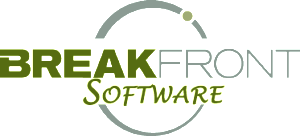In part 1 of this series, we looked at the marketing engine that needs to be created to drive leads to our doorstep and it’s definitely different from Dad’s shop. Now let’s look at the sales process that we need to ensure that we close our opportunities. The key word here is process.
In most K&B businesses we talk about process, but we have no means to measure the output. The old adage in business is if you can’t measure it, you can’t manage it.
Let’s suppose that you spend $10,000 a year on phone book advertising, which is one piece of your marketing plan. Certainly not an unusual number, considering the number of books that may cover an area and the ad size you need to get noticed. Now if you got 100 walk-ins a year based off of that ad, each lead would cost you $100; that’s not a cheap lead!
The 4 step sales process
Let’s further break that down into a 4 step sales process (we recommend the 4M Sales Process for K&B dealers). You would now want to know where you may lose that $100 lead investment.
Is it upfront in the Meet stage (first meeting where you record information and qualify the prospect)? Is it in the Measure stage where you go to the home (your best shot at winning a deal is if you’re first in the home)? Or could it be in the Match phase (where you present a quote) or Make the Deal phase (where you close)? Knowing where you win or lose is crucial to your success.
Here, the process allows us to quantify who wins what and, more importantly, where. Even though that prospect cost me $100, I would much rather lose it in the meet stage if he or she is not a qualified buyer (remember we flush that out early). Here, not spending time on an unqualified lead allows us time to close more qualified customers. If I don’t measure this, then I have no access to where I win or lose and how much that costs my business.
You need a sales process
|
7 Steps to Ensure Successful Selling: 1) Don’t lead with design. Design is a commodity and 2) Don’t try to sell to everyone. The most successful 3) Don’t ask closed-ended questions. Allow your prospect to 4) Listen twice as much as you talk. We sometimes think that 5) Find the pain and sell to the why. If you listen, consumers 6) Never leave a client meeting without next steps clearly 7) Ask for the sale. This can come at multiple occasions in the |
Now in this whole example mistake number one would be phone book advertising of that scale! We would much rather see a social/blogging strategy that interested the consumer in your business early in the consumer buying progression. That aside, a sales process allows you to:
- Find the pain and sell to the why. Finding out what the customer wants to experience when the project is complete allows you to fill in the why. I.e. I want a kitchen that will be a showpiece of the neighborhood.
- Address the budget early in the process. It’s not about lifting money out of your client’s pockets; it’s about designing a project around their budget.
- Explain your process and why that differentiates you in the market. Showing completed project pictures, articles written about your company, testimonials, license and insurance information establishes you as serious about the business and proves you’re not a hobbyist!
Addressing these and other concepts in the Meet phase helps you qualify a prospect quickly. Asking how they heard about you allows you to track the benefit of your lead source. And, as the process tightens, your dashboard will provide you with information that allows you to push more highly-qualified, lower-cost leads through the showroom door.
Hoping that we get the right customers is OK but, remember, hope is not a strategy!
Nick Ritota, CKD-CBD is Director of Sales and Marketing for CompanionCabinet Software a marketing, training and software company specific to the kitchen and bath industry. For free dealer resources, visit: www.CompanionCabinet.com/tools-for-cabinet-dealers


